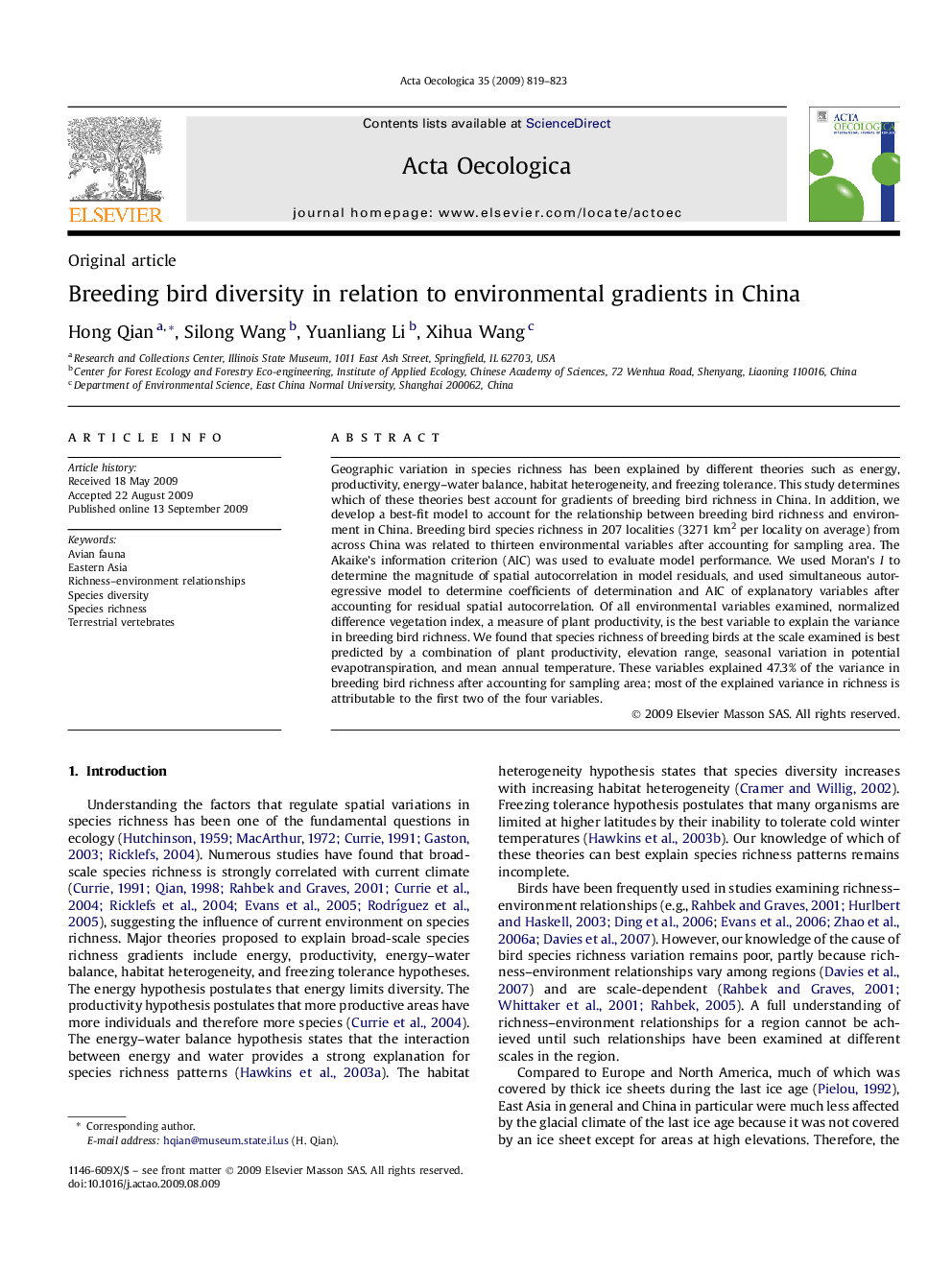| Article ID | Journal | Published Year | Pages | File Type |
|---|---|---|---|---|
| 4381137 | Acta Oecologica | 2009 | 5 Pages |
Abstract
Geographic variation in species richness has been explained by different theories such as energy, productivity, energy-water balance, habitat heterogeneity, and freezing tolerance. This study determines which of these theories best account for gradients of breeding bird richness in China. In addition, we develop a best-fit model to account for the relationship between breeding bird richness and environment in China. Breeding bird species richness in 207 localities (3271Â km2 per locality on average) from across China was related to thirteen environmental variables after accounting for sampling area. The Akaike's information criterion (AIC) was used to evaluate model performance. We used Moran's I to determine the magnitude of spatial autocorrelation in model residuals, and used simultaneous autoregressive model to determine coefficients of determination and AIC of explanatory variables after accounting for residual spatial autocorrelation. Of all environmental variables examined, normalized difference vegetation index, a measure of plant productivity, is the best variable to explain the variance in breeding bird richness. We found that species richness of breeding birds at the scale examined is best predicted by a combination of plant productivity, elevation range, seasonal variation in potential evapotranspiration, and mean annual temperature. These variables explained 47.3% of the variance in breeding bird richness after accounting for sampling area; most of the explained variance in richness is attributable to the first two of the four variables.
Related Topics
Life Sciences
Agricultural and Biological Sciences
Ecology, Evolution, Behavior and Systematics
Authors
Hong Qian, Silong Wang, Yuanliang Li, Xihua Wang,
